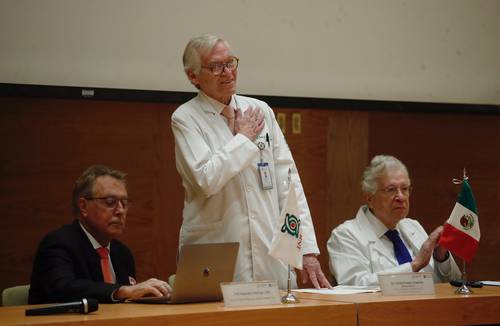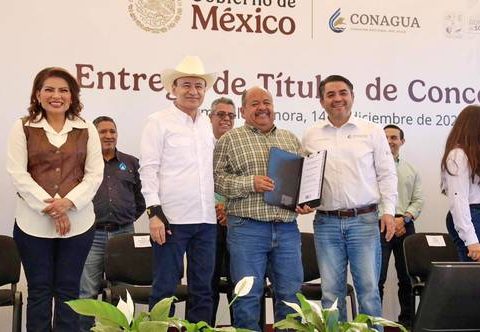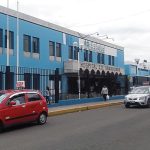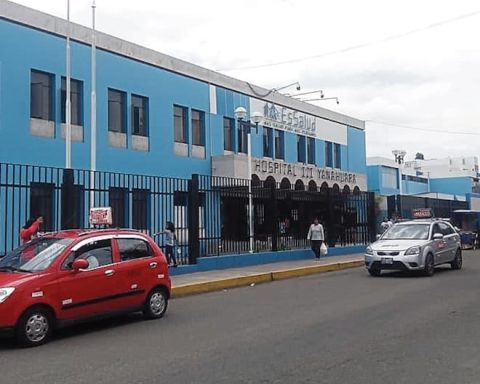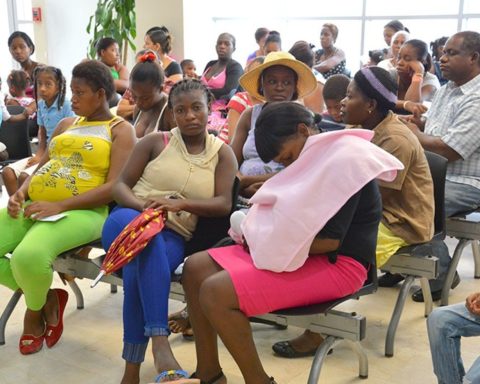National Institute of Rehabilitation joins a pioneering study with stem cells
▲ Alejandro Madrigal (left), scientist distinguished as an officer of the Order of the British Empire, participated yesterday in the Conference of Resident Physicians of the INR. He is accompanied by the institute’s general director, Carlos Pineda Villaseñor (standing), and Manuel Ruiz de Chávez.Photo Cristina Rodriguez
angeles cruz martinez
Newspaper La Jornada
Friday, January 27, 2023, p. 9
The National Rehabilitation Institute (INR) will join the Ibero-American Network for Advanced Therapies (RITA), in which a group of scientists, led by the Mexican Alejandro Madrigal, develop treatments based on stem cells to replace the defense system of the body in order to put it in a position to fight complex diseases such as cancer.
Madrigal participated yesterday in the 16th Conference of Resident Physicians of the INR and commented on the work he has carried out in the United Kingdom for more than four decades. With the integration of technologies considered disruptive (because it is about inducing pluripotent stem cells into the body), she has demonstrated the effectiveness of treatments against some malignant tumors.
The specialist, professor of hematology at University College London, founder and first scientific director of the Anthony Nolan Research Institute in the United Kingdom, assured that the technology known as CAR-T (acronym for T cells with chimeric antigen receptors ) may be the alternative to cure, among others, breast cancer, leukemia, multiple myeloma and glioblastoma. The latter is a brain tumor against which practically nothing can be done, Madrigal explained.
The project consists of the use of gene and cell therapies and tissue engineering.
Madrigal’s work began with the creation of stem cell banks. He has participated in the registration of more than 40 million people from 55 countries who have agreed to be donors when required.
Scientific research has shown over the years that adult or mesenchymal stem cells have a regenerative role and the ability to modulate the response of the body’s defense system.
The scientist visited the INR laboratories yesterday and commented that he had identified several projects in which the possibility of using CAR-T technology could be explored. Controlled clinical trials are needed and possible, he said.
The director of the INR, Carlos Javier Pineda Villaseñor, commented on the areas with the possibility of joining the RITA, among them the gerosciences laboratories, dedicated to studies on aging.
There is also the cell and regenerative therapy laboratory, whose researchers have a project in the experimental phase to use medical grade honey to treat osteoarthritis.
Pineda explained that specialists are searching for mechanisms to alleviate pain and preserve cartilage. Collaboration with Alejandro Madrigal’s project could speed up the INR investigation, the official said.
